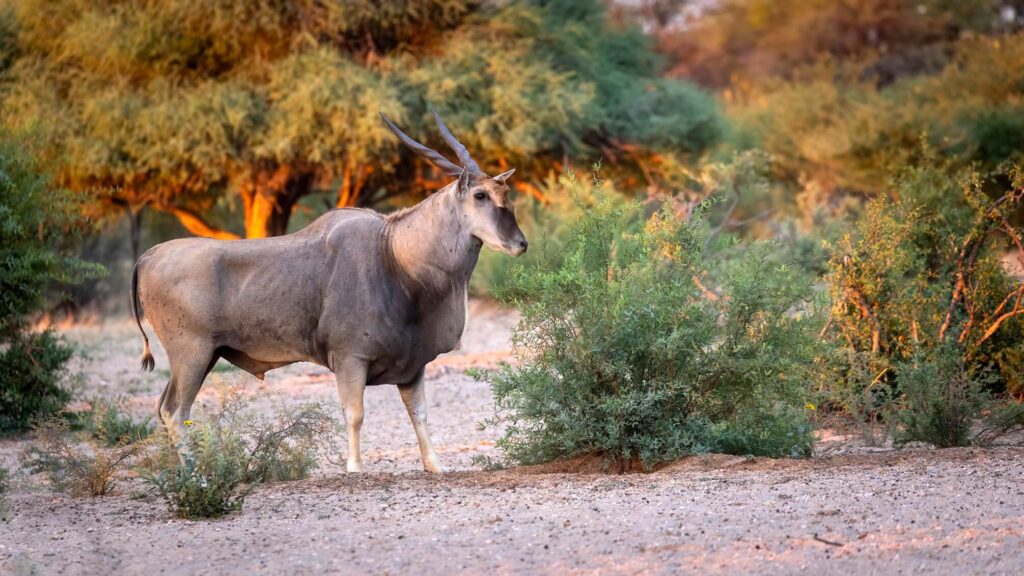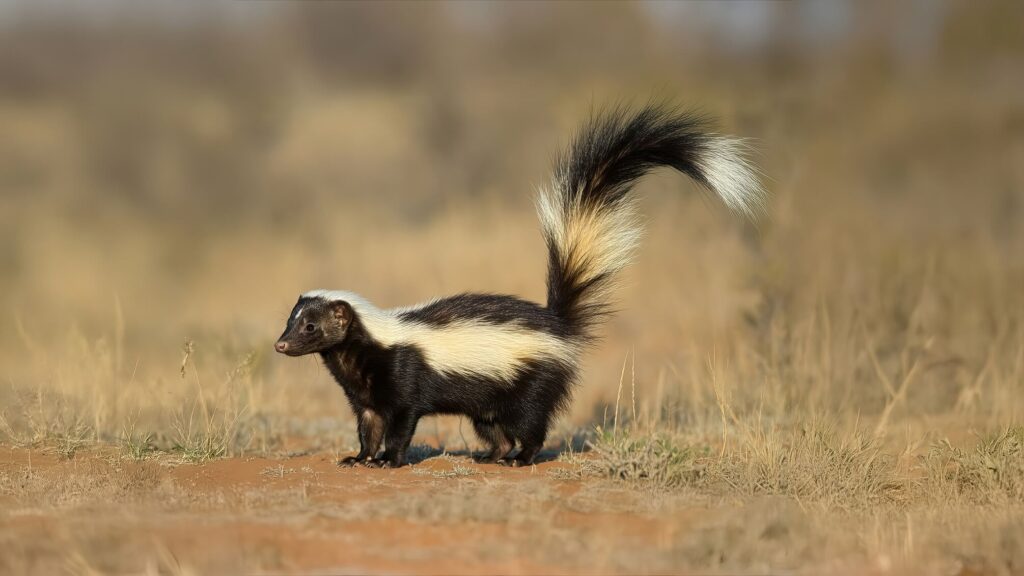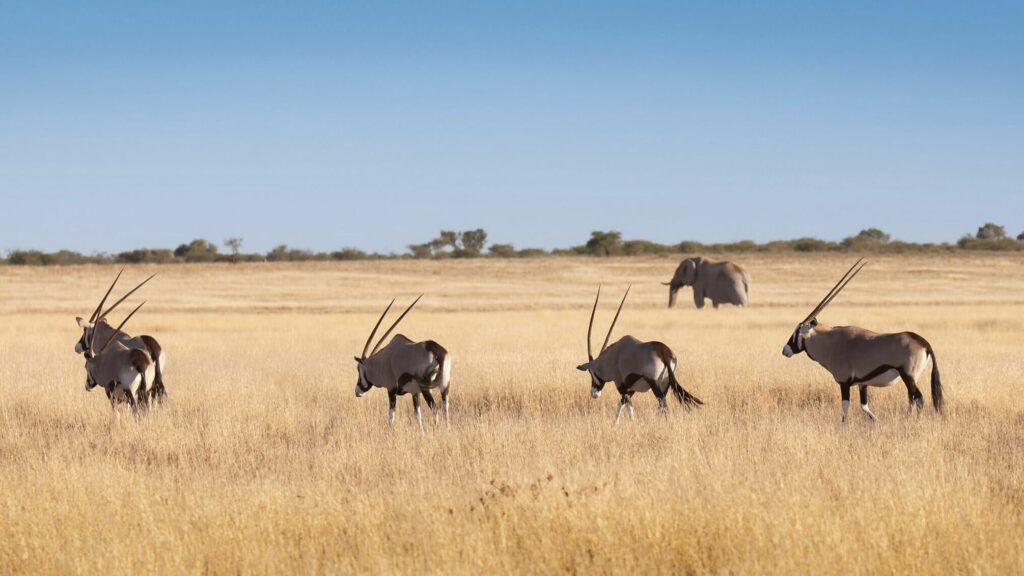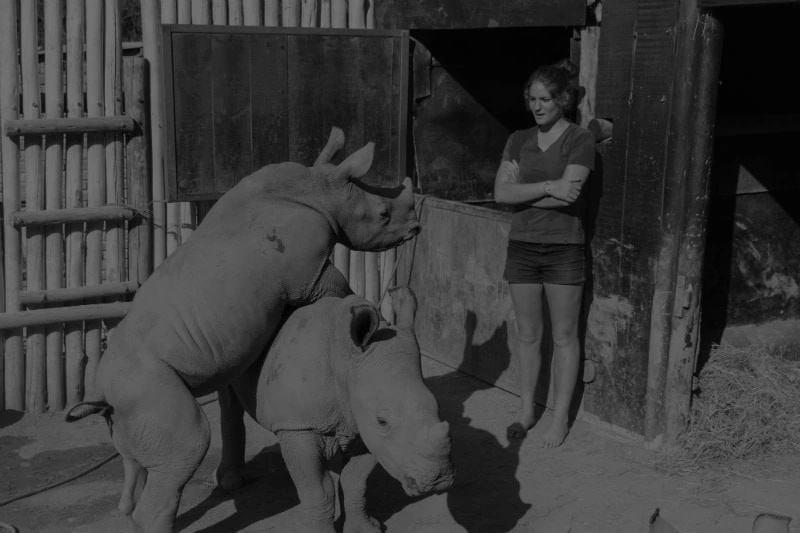Ground Squirrels (Xerus)
Kalahari Ground Squirrels: Masters of Desert Survival
South African Xerus Ground Squirrels (Xerus inauris), also known as Cape ground squirrels, are small, diurnal mammals that are native to South Africa. They are found in a variety of habitats, including savannas, woodlands, and scrublands. This habitat range includes the Kalahari Desert. These small, diurnal mammals are also known for their distinctive coloring, which ranges from reddish-brown to grey, and for their bushy tails.
Some facts about South African ground squirrels in the Kalahari include:
Physical Characteristics: Size and Speed
- Weight: Adult South African ground squirrels typically weigh up to 650g.
- Speed: South African ground squirrels can run at speeds of up to 32km/h.
Ground Squirrel Society: Life in the Colony:
- South African ground squirrels are social animals, living in colonies of up to 100 individuals. They are active during the day and spend their nights in underground burrows.
- They have a strong hierarchical social structure, with dominant individuals having first access to food and mates.
- They communicate with each other through a variety of vocalizations and body language.
Desert Survival Guide: How Ground Squirrels Beat the Heat
- South African ground squirrels in the Kalahari have several adaptations to survive in the harsh conditions of the desert, such as reduced water loss, and their diet is less water dependent than other food sources.
- South African ground squirrels in the Kalahari are known for their burrowing behavior, which helps them to escape from the heat and to find food resources.
Warning Whistles and Gutturals: Ground Squirrel Communication
When sensing danger, ground squirrels emit a whistle-like vocalization as a warning signal. This warning can come in two forms; a sharp, high-pitched “bi-jo” which indicates a severe threat and a moderate-pitched “bi-joo” sound which is used for less pressing dangers. During hostile encounters, squirrels produce deep, guttural noises as expressions of hostility. Juvenile squirrels make playful calls, nest-related chirps, and squeaks of protest.
A Ground Squirrel’s Menu: Desert Delights
South African ground squirrels are omnivores, and their diet consists of a variety of plants and insects. This diet consists mainly of roots, bulbs, and seeds, which are less water-dependent than other food sources, although they get sufficient moisture from these food sources and thus, do not need to drink water. They also eat insects, and some fruits when available.
Raising the Next Generation: Ground Squirrel Reproduction
- South African ground squirrels breed throughout the year, but peak breeding occurs in the spring and summer.
- Gestation period is around 42 – 49 days.
- Litters typically consist of 1 – 3 pups.
- Pups are born blind and hairless and are dependent on their mother for the first several weeks of their life.
- Males reach sexual maturity at 8 months, with females reaching sexual maturity at 10 months.
Ground Squirrel Survival: Threats and Conservation
- Habitat loss due to human development and agriculture is a major threat to South African ground squirrels.
- They are also hunted by predators such as snakes and birds of prey.
- Disease can also be a problem for South African ground squirrel populations.
Conservation Status:
South African ground squirrels are not considered to be threatened at this time. However, their population has decreased in some areas due to habitat loss and poisoning of grasses and crops to prevent loss and the spread of rabies. Conservation efforts such as habitat preservation, research, and education can help to mitigate the threats facing them and ensure their survival in the Kalahari.
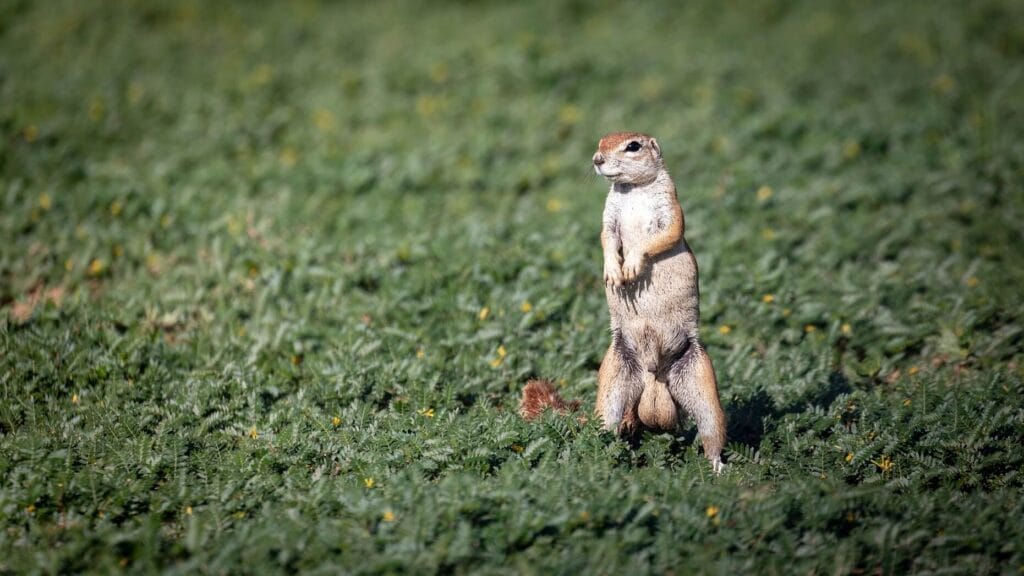
Xerus – Squirrel balls
Interesting Fact:
- South African squirrels, like many other ground squirrels, have a unique characteristic of having highly variable testicular size. Male South African ground squirrels have testicles that are proportionally larger than any other mammal of their body size. This is likely due to the intense competition for mates and the need for high sperm production. The testicles of a male South African ground squirrel can account for up to 3% of their body weight, which is proportionally larger than any other mammal on earth.
- This variation in testicular size is not only limited to South African squirrels, but also seen in other ground squirrels as well as some other rodents. This characteristic is thought to be an adaptation to intense competition for mating opportunities, as larger testicles are associated with higher sperm production and greater reproductive success.
- Moreover, testicles size in South African squirrels can also vary seasonally, increasing in size during the breeding season. This is thought to be an adaptation to ensure that males have the highest possible sperm count when mating opportunities are most abundant.
- Males masturbate after copulation presumably to keep their genitals clan, and to reduce the risks of sexually transmitted infections.
Conclusion
South African ground squirrels are fascinating animals that play an important role in the ecosystem. They have several adaptations to survive in the harsh conditions of the desert. They are an important food source for predators, and their burrowing activity helps to aerate the soil and promote plant growth. However, human activities such as habitat destruction and poisoning can have a negative impact on their populations.
Conservation efforts such as habitat preservation, research, and education can help to mitigate the threats facing South African ground squirrels and ensure their survival. Additionally, South African ground squirrels play an important role in the ecosystem and contribute to the biodiversity of the region they are found in, it is crucial to protect them and conserve them.
Book Now
Want to see a Xerus Ground Squirrel for yourself? Our Project let’s you join a Kalahari Safari to help African Wildlife or Contact Us for any other questions or read our Testimonials!
Learn more about these amazing animals here!
